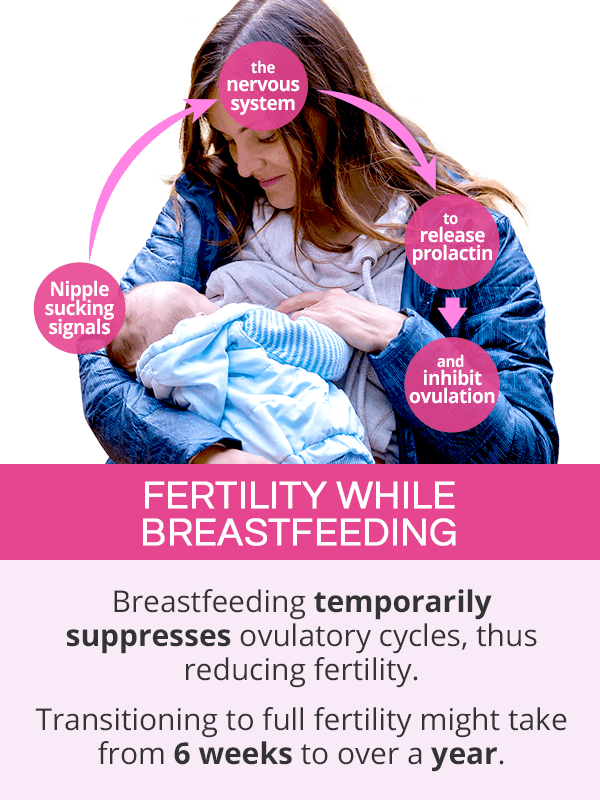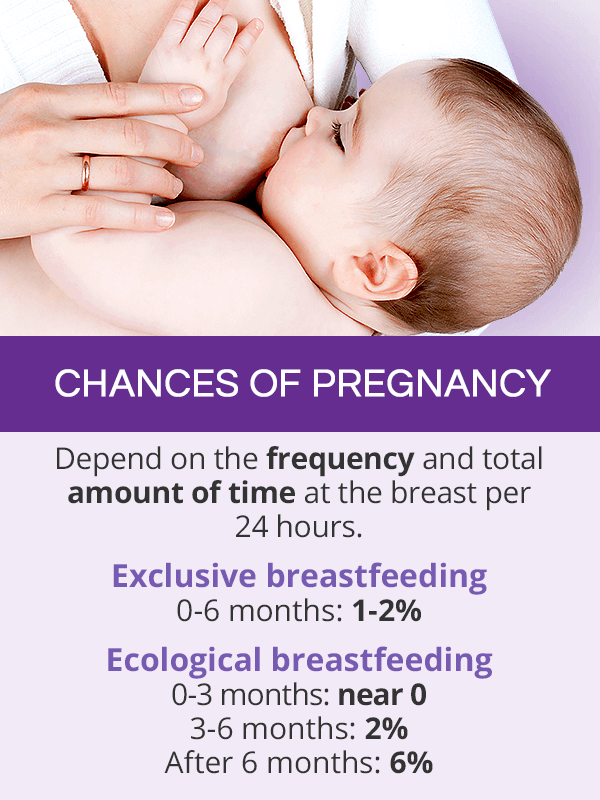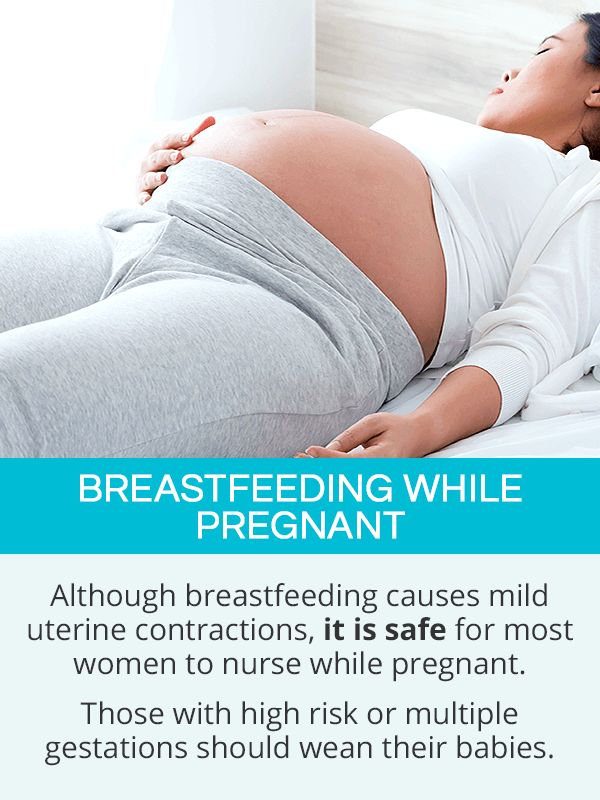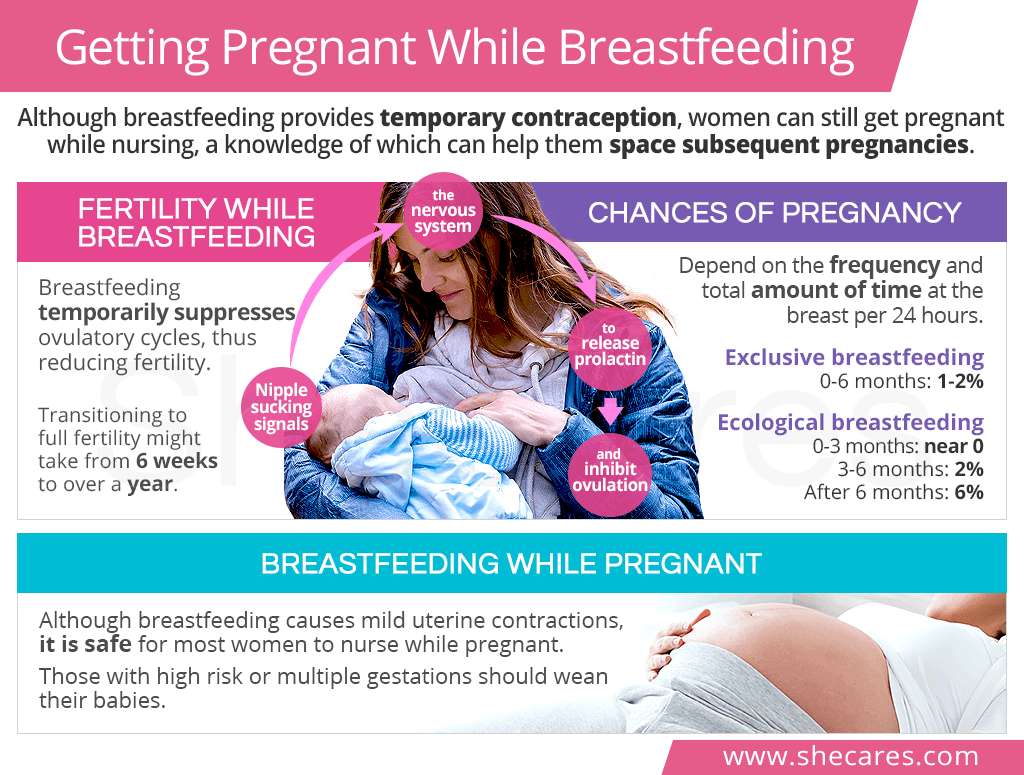Fertility while Breastfeeding

How Does Breastfeeding Prevent Pregnancy
Human milk is produced in the breasts, specifically in small areas called alveoli, which are connected to the nipples through a series of ducts.
The baby's mouth suckling on the nipples stimulates the brain to release two hormones, prolactin and oxytocin. While these hormones carry on essential functions in nursing, prolactin also plays a crucial role in a woman's fertility.
High prolactin levels inhibit gonadotropin-releasing hormone (GnRH), which is key to suppressing the release of other key reproductive hormones, like follicle-stimulating hormone (FSH) and luteinizing hormone (LH). With these hormones suppressed, ovulation cannot take place, though only temporarily.
Regaining Fertility While Breastfeeding
Transitioning to full fertility while breastfeeding generally occurs in stages, which - depending on individual breastfeeding patterns and a woman's hormonal state - might take from about six weeks to over a year.
The process of fertility restoration after having a baby is very individual. Some women who are nursing might ovulate before their first post-partum menses, while others might start having periods but without ovulation. Although breastfeeding is known to temporarily suppress menstruation, there is no way to know for sure for when a woman's ovulation will return.
Certain milestone moments, such as introducing the newborn to solid food or longer sleep intervals at nighttime, might be interpreted by the body as a reduced milk demand, triggering ovulation sooner.
Chances of Pregnancy while Breastfeeding

A woman's odds of getting pregnant while breastfeeding hugely depend on its patterns, most importantly the frequency and total amount of time the baby is at the breast in 24 hours. Generally, the more a woman nurses, the less likely she is to ovulate.
There are two types of breastfeeding patterns that are commonly used to naturally space pregnancies, exclusive and ecological breastfeeding.
Exclusive Breastfeeding
Also called Lactational Amenorrhea Method (LAM), the chances of pregnancy while exclusively breastfeeding are 1-2%, which means that one to two women out of a 100 will get pregnant. On average, it takes six months for menstruation and full fertility to return while on this type of breastfeeding.
The LAM conditions include the following:
Baby is under the age of six months
Baby is only fed breast milk straight from the breast (no water, etc.)
A woman's period has not returned after two months since birth
Ecological Breastfeeding
Ecological breastfeeding consists of The Seven Standards, a set of conditions that have to be followed in order to maintain a fertility-free life.
The chances of pregnancy while breastfeeding ecologically are near zero during the first three months. After three and before six months, the chances increase to about 2% (2 in 100 women will get pregnant) and 6% onwards until the first period. On average, it takes 14 to 16 months for menstruation to return while on this type of breastfeeding.
The Seven Standards include the following:
Exclusively breastfeeding the baby for the first six months
Using no pacifiers or bottles
Comforting the baby at the breast
Nursing on cue during the day and night
Sleeping with the baby for night feedings
Sleeping with the baby during daytime naps for feeding
Keeping the baby close to avoid separation
Pregnant and Breastfeeding

As a woman breastfeeds, the oxytocin that is released causes uterine contractions, which helps the organ to return to its pre-pregnancy condition. Consequently, women often wonder if continual breastfeeding while pregnant will negatively affect the fetus or lower milk supply.
Fortunately, in a healthy gestation, these mild contractions do not lead to pregnancy complications, such as preterm birth, and most women can safely continue nursing their babies during pregnancy as long as they can physically and psychologically support its demands. Nursing while pregnant might bring about fatigue, nausea, and breast tenderness, among other discomforts.
Nevertheless, women with high-risk pregnancies, multiple gestations (twins, triplets, etc.), or other conditions might be advised to wean their babies, effectively shutting down milk production.
Key Takeaways
Breastfeeding is often considered a foolproof method of contraception, while – in reality – it tends to provide only temporary protection from unplanned pregnancies. Its inhibitory effects on ovulation are due to high levels of the hormone prolactin that are released as the baby stimulates the breasts while suckling on them. The process of regaining fertility while breastfeeding varies from woman to woman and might range from six weeks to over a year after birth, depending on the patterns of breastfeeding. The two most common types of nursing as a means of natural contraception include exclusive breastfeeding and ecological breastfeeding, each with a set of conditions that have to be met to keep the chances of conceiving while breastfeeding low.
Sources
- American Pregnancy Association. (2018). Breastfeeding While Pregnant. Retrieved February 19, 2019 from http://americanpregnancy.org/breastfeeding/breastfeeding-while-pregnant/
- Berkeley University. (2011). Your Guide to Breastfeeding. Retrieved February 19, 2019 from https://uhs.berkeley.edu/sites/default/files/wellness-womenshealth_breastfeedingguide_0.pdf
- Breastfeeding USA. (n.d.). Understanding Your Fertility while Breastfeeding. Retrieved February 19, 2019 from https://breastfeedingusa.org/content/article/understanding-your-fertility-while-breastfeeding
- Natural Family Planning International. (2011). Ecological Breastfeeding and Exclusive Breastfeeding. Retrieved February 19, 2019 from http://nfpandmore.org/wordpress/?p=1571
- Stanford Medicine. (n.d.). Getting Started with Breastfeeding. Retrieved February 19, 2019 from https://med.stanford.edu/newborns/professional-education/breastfeeding.html
